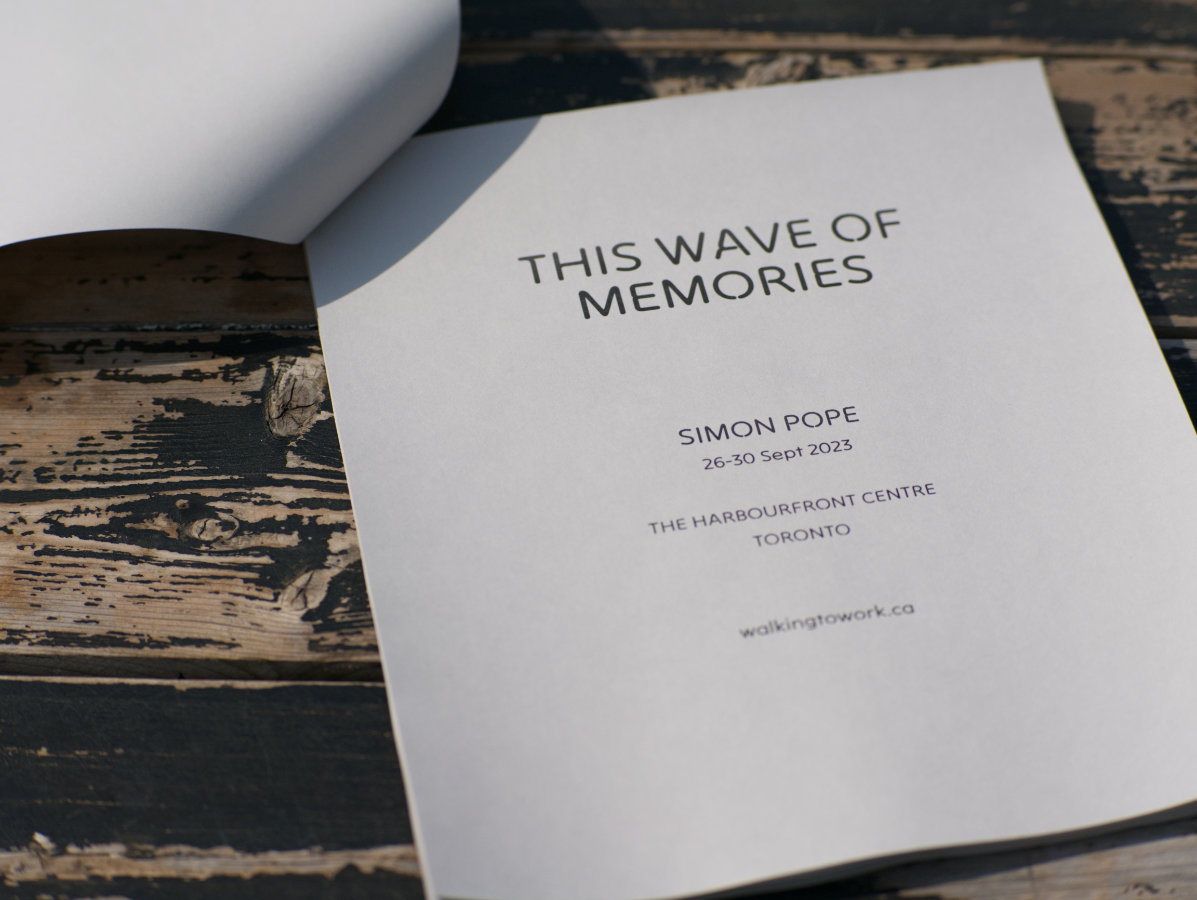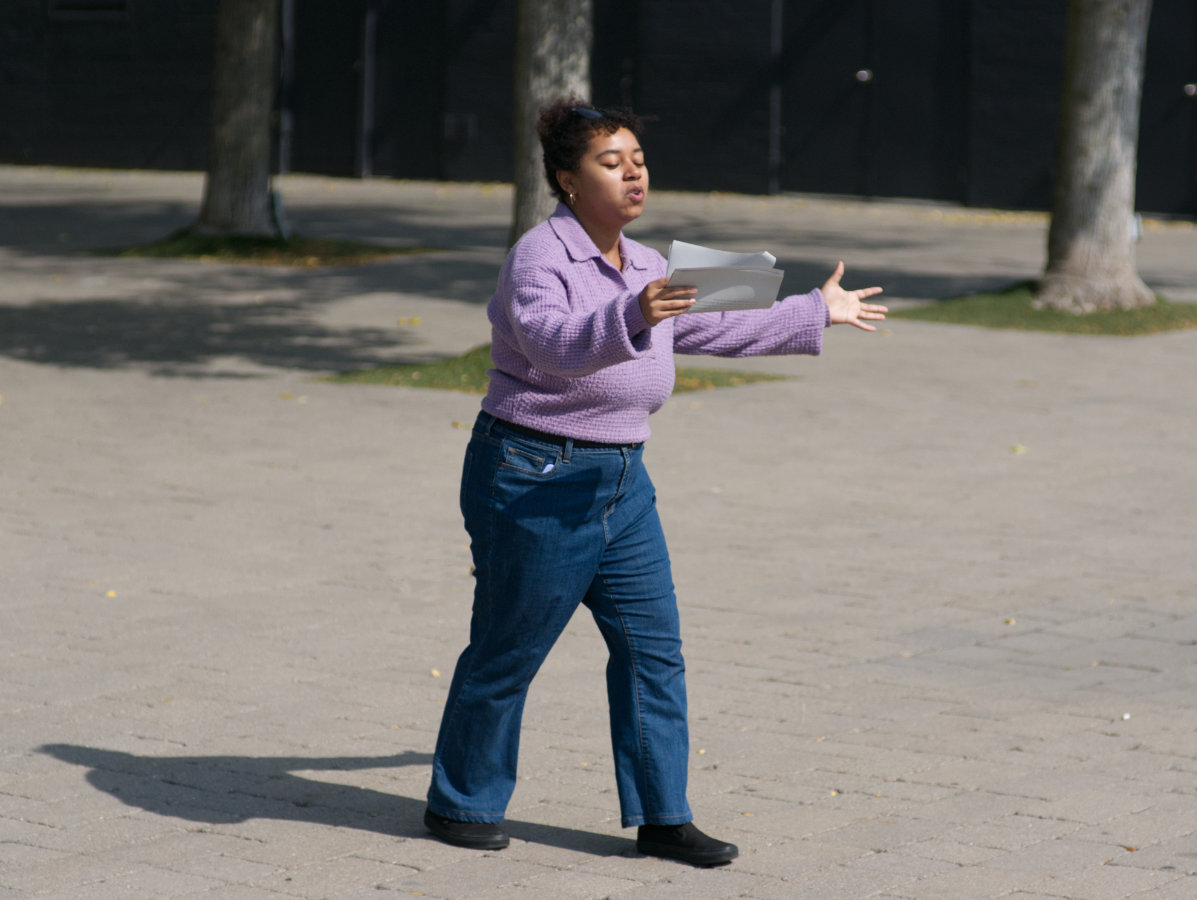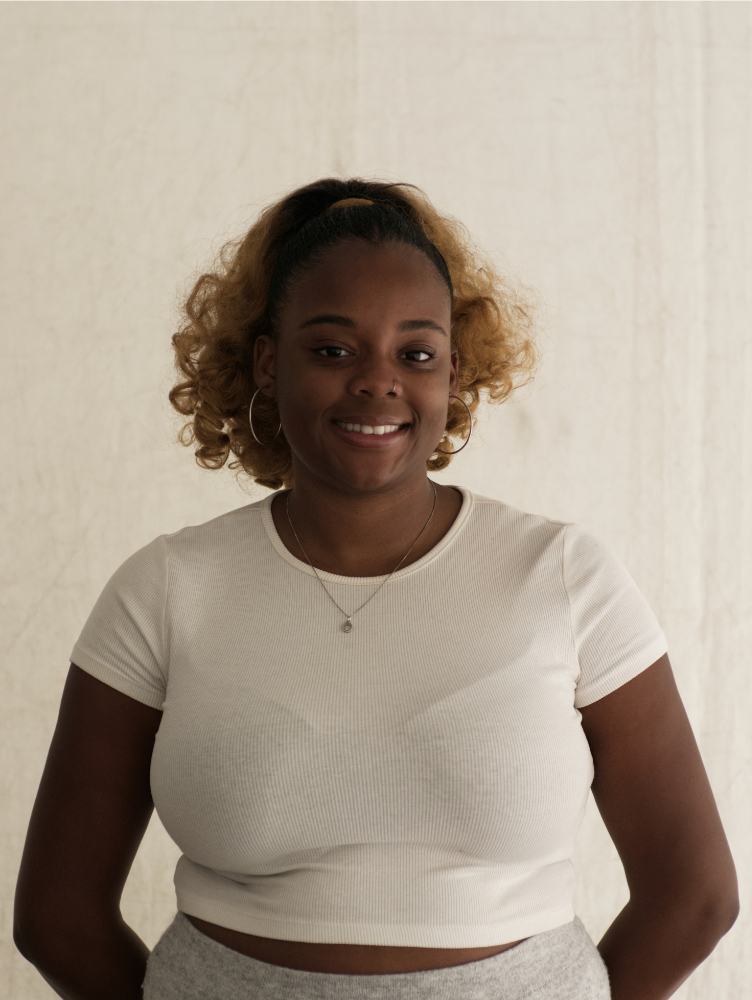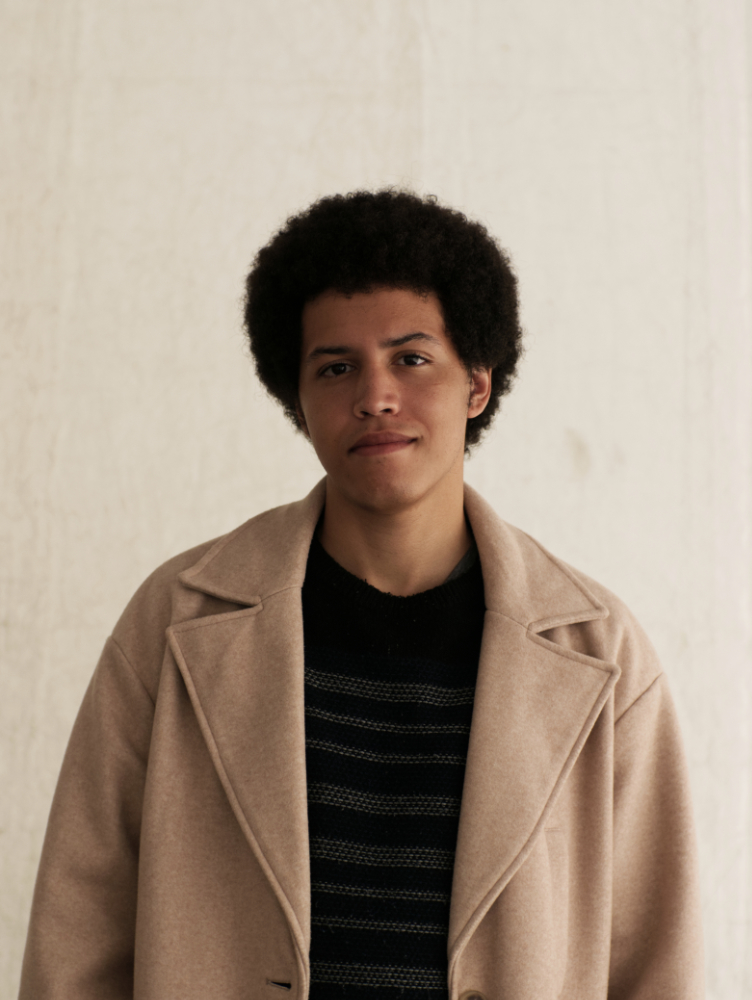
As this wave of memories flows in, the city soaks it up like a sponge and expands.Italo Calvino, INVISIBLE CITIES (1974)

PERFORMANCES BY AN ENSEMBLE OF ACTORS
12-2pm | 26th - 30th September 2023
Tuesday, Wednesday, Friday & Saturday in the North Orchard at The Harbourfront Centre;
and at Waterfront Neighbourhood Centre on Thursday.
Featuring Jenna Geen, Jahnelle Jones, Oprah Lemorin, and Judah Parris.
Before, this city was a mountain, then they cut through it, and laid the foundation of it. There are lakes there, and even from the city you can see the rest of the mountains, as the range starts, the Himalayas start there. It's an interesting view there, which I love. If you are standing here, now, you cannot see on the other side. But there, there is room. You cannot build buildings that are more than two floors. So that you can preserve a view of the mountains. So all around you see just the mountains – not clearly – but if it's been raining yesterday or the next day, you can go to the lake, or stand on top of the buildings, and you can see clearly the shape of the mountains. They look like uneven triangular shapes in the distance. How do you say… the ridges of the mountains… the separation between the mountains… the lines from the top, which is all snowy. In the middle, they are dark brown, and then a little bit of greenery.Transcript #25




Stills from first session at Harbourfront Centre, 26/09/23.


The A-frame sign that accompanied the performance.




















Actors who took part (left to right; top row to bottom row): Jahnelle, Oprah, Annie; Judah, and Jenna.

A group of actors walk in a public place, speaking from a script which describes other places, to an audience and to passers-by; accompanied by improvised gestures relating to what is described in the script. Actors are distributed throughout the venue, sometimes coinciding, but largely taking an independent route, taking their audience on a walk around the venue. The result is that the venue is alive with spoken-narratives and out-of-the ordinary gestures; full of different voices, and of movement; and of descriptions of other places. The performance is a temporary intervention at the venue, with a duration of between 20-30mins at a time, repeated over a 2 hour period with breaks between performances. Photographic, and audio-video recording will be made of one of the performances, for documentation purposes and published online. The script is based on interviews, gathered using various methods, with people who work on the Waterfront.
This Wave of Memories begins with the question: "Tell me about another place, a place that you feel an attachment to," and teases out recollections about the sights, sounds, smells, and social interactions of somewhere other than the place where the interview is conducted. Many of the people working in service sector jobs on the Waterfront are born elsewhere, and maintain significant connections to those places. I am interested here in gathering multifaceted descriptions of those places, as the basis of the scripts that will later be performed. After seeking permissions, I conducted interviews with (in this case security staff) either while sitting in one location or, as discussed below, using a 'walking and talking' method.

 Arun and Elias, after the "walk & talk".
Arun and Elias, after the "walk & talk".


 Kevin, Sonia and Tanish, after their interview at the Ferry Docks.
Kevin, Sonia and Tanish, after their interview at the Ferry Docks.




Sheldon, Huzefa, Kanvar, and Abdullah, after their interview at the 100 & 150 QQE.
There are lots of backwaters where I come from, so here reminds of the backwaters and taking the ferry across the bay. You walk about 8km and then take the ferry to the next village. It's very tropical with coconut trees everywhere. Many are tall, with long, thin, straight, greyish-white trunks. Their branches spring out from the top, with long green leaves hanging down like a fan. You can walk from my house. To start, you walk down the hill. When we were little kids we could just play around in the fields near here. We have lots of paddy fields with little streams of water. They're very green – covered with very bright greenish-yellow leaves sprouting from the mud. The mud is brown and waterlogged. There are steep banks of exposed earth above the streams of cloudy brown water.Transcript #1
This experiment draws on some of the "walking & talking" techniques that I have used elsewhere, to generate descriptions of movement through specific other places. This method will be familiar to those who know geographer Jon Anderson's work, (‘Talking Whilst Walking: A Geographical Archaeology of Knowledge’(2004)) and the ways in which walking in places familiar to interviewees is key to establishing trust.
In contrast, this use of 'walking & taking' enables us to think about elsewhere, about how to describe that place in comparison to where we are now walking – in a sense, to blend our experience of "here and now" with our experience of other temporalities, of other situations, and of other places.
Arun and Elias work as security guards at a condominium block on Toronto's Watefront. Both were born and raised outside of Canada – in the south of India and Ethiopia respectively. This was the first time that I'd met any project participants (beyond those within Waterfront Toronto), and so it was an opportunity to guage the accessibilty of recruitment/invitation into the project, how readily the overarching premise/backstory of the project is understood by participants, and how plans for production work in practice.
I sat with Arun and Elias in the lobby of their building, and to explain the premise behind the work, the process that we'd go through – and to thank them for their time. I began by expressing interest in the lived experience of those of us who come from elsewhere, as having "split attention" between "here and there". At this point, I could get a stronger sense of whether participants did indeed feel this (in this case, they did); once this premise was established, it explaining the process of walking & talking was straightforward.
Arun and Elias walked with me along the Harbourfront, towards the Ferry terminal and back. The freezing wind determined the length of time we stayed outside – this, and my concern that I shouldn't demand too much time from participants who have just ended their shift. Arun began, describing a walk to a ferry in Kerala; Elias followed, describing a walk around his hometown in Ethiopia. As is often the case, encouraging participants to give a rich, detailed description presented its challenges: actual details of the sensory experience of walking is far from simple, and often it's the generic naming of objects that dominates. In future walks & talks, I plan to mitigate this risk by paying more attention to the route being described, prompting the recall of directions, waypoints, as well as asking questions about the sensory experience of walking in another place.
It's painted white there, with gold, with decoration. There are triangle shapes, rectangular shapes of the building. The lights have gold colour with green diamonds around them. I can't really explain them, but green diamonds and gold. Bright colour. As you walk in, it's the main thing, when you walk in, the first thing that you see. It's s big and beautiful. Then there are lights – pots lights in the ceiling. Then you've got the light on the pillars.Transcript #45
Creative Commons CC BY-NC-SA Attribution-NoDerivatives licence applies to all the artwork, texts, etc. contained within and described on this website.
Powered by w3.css